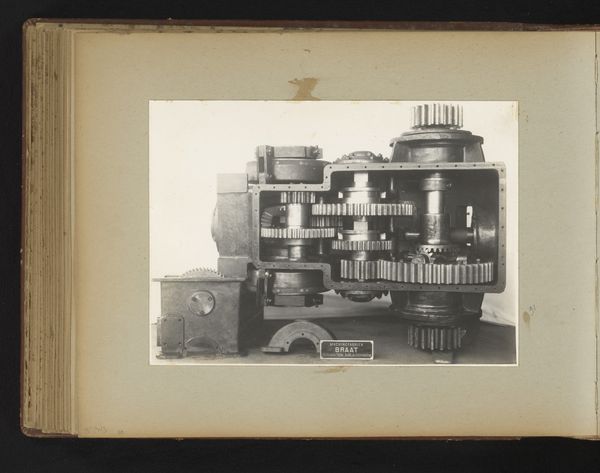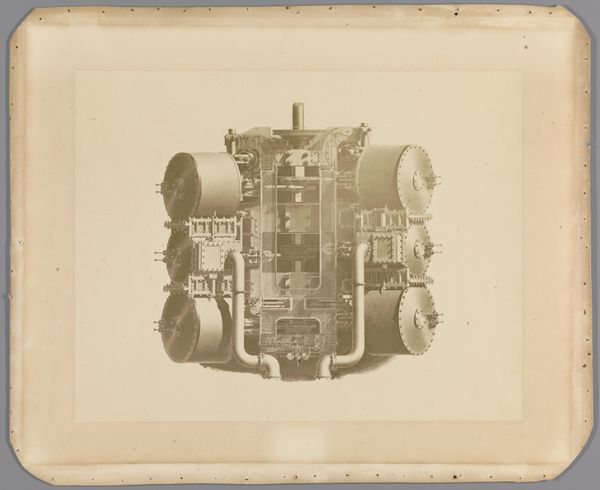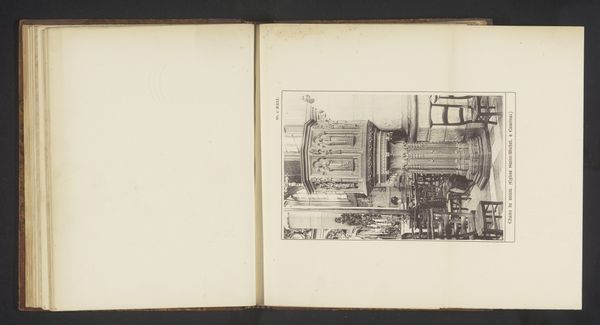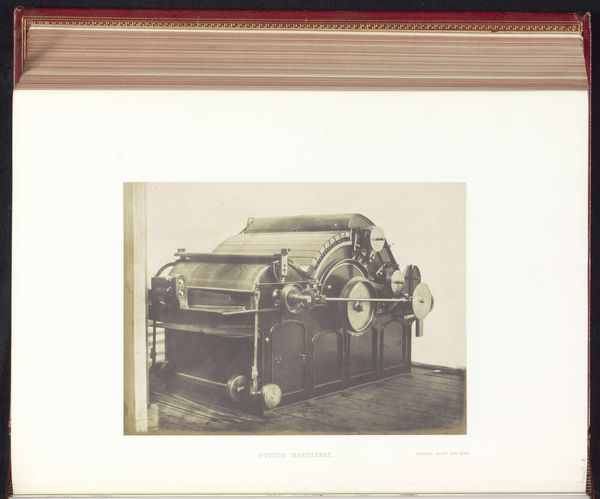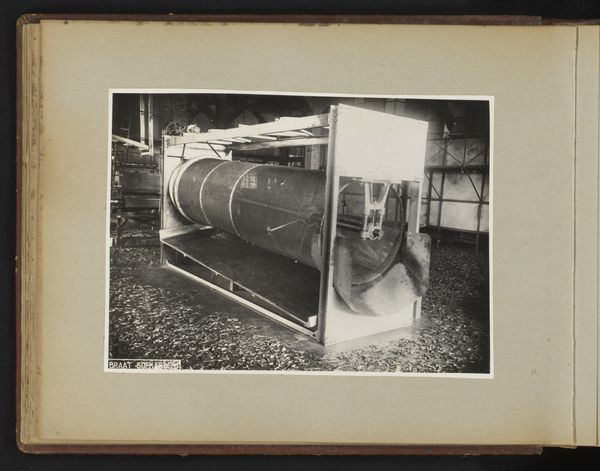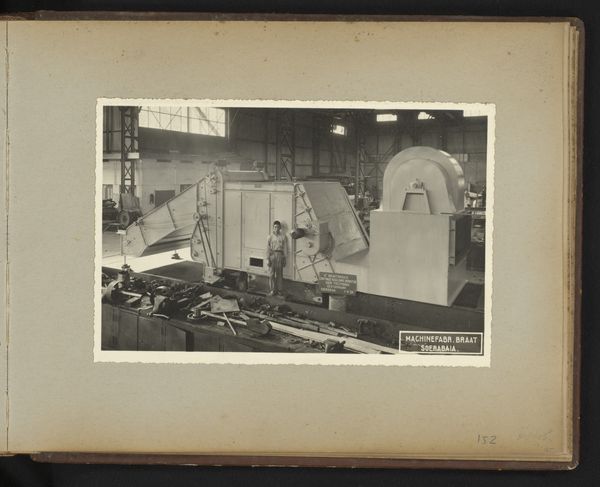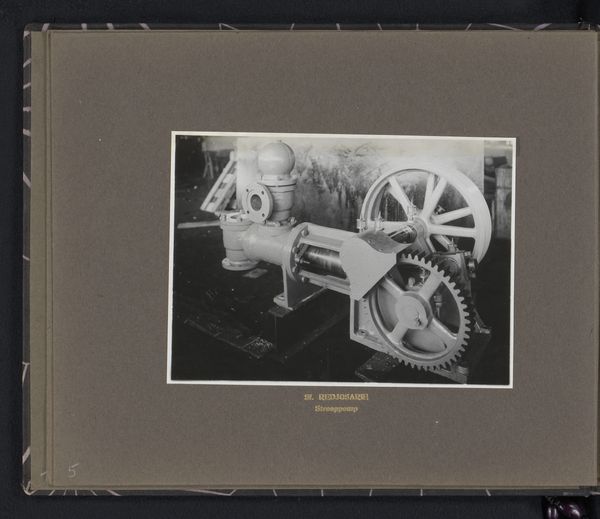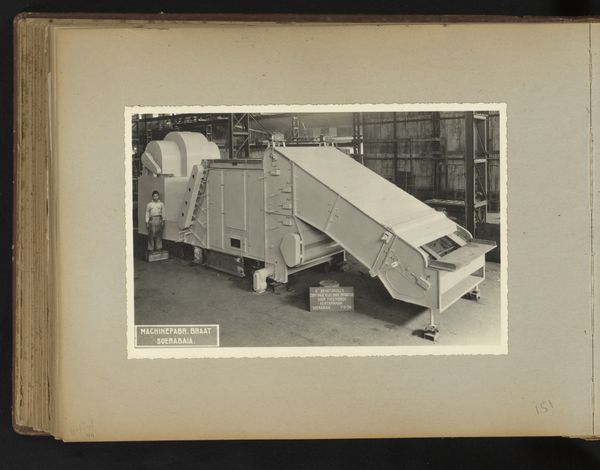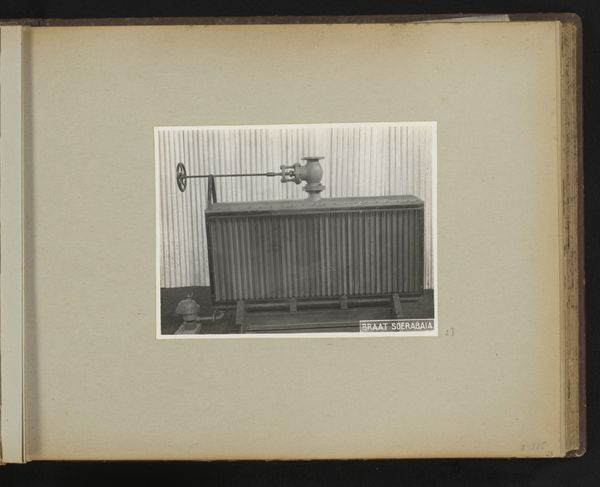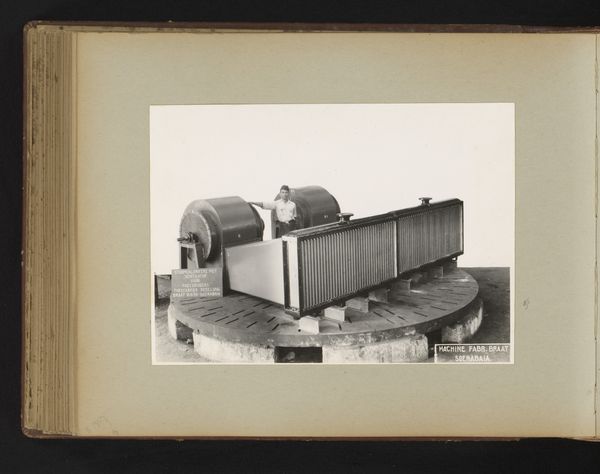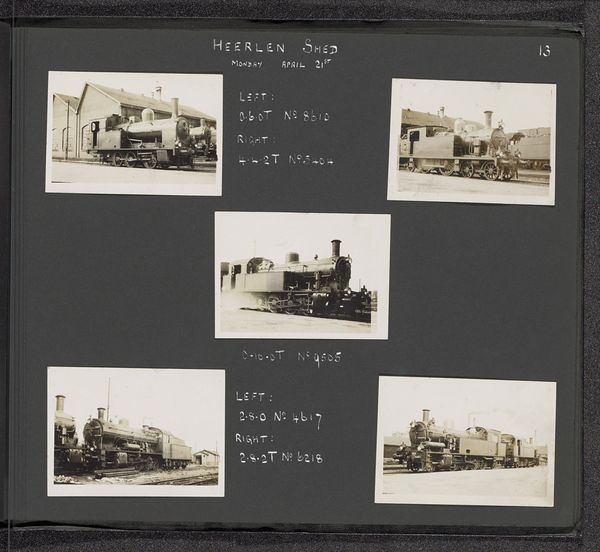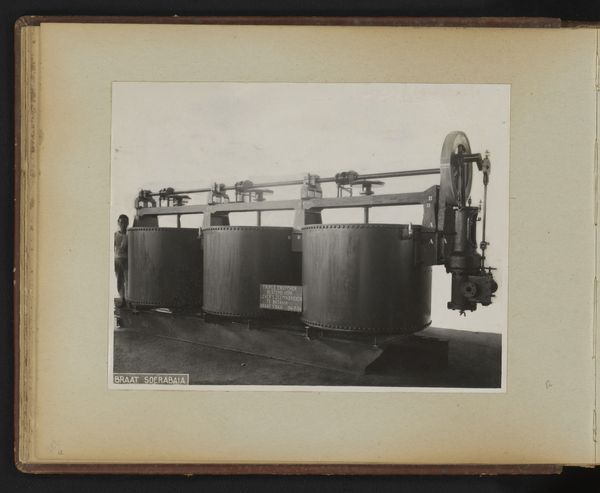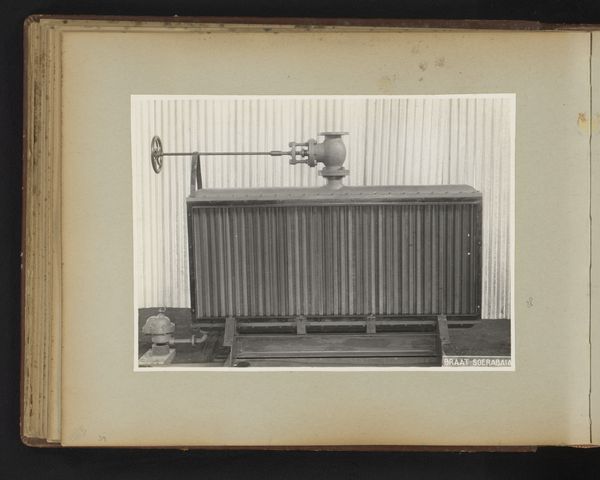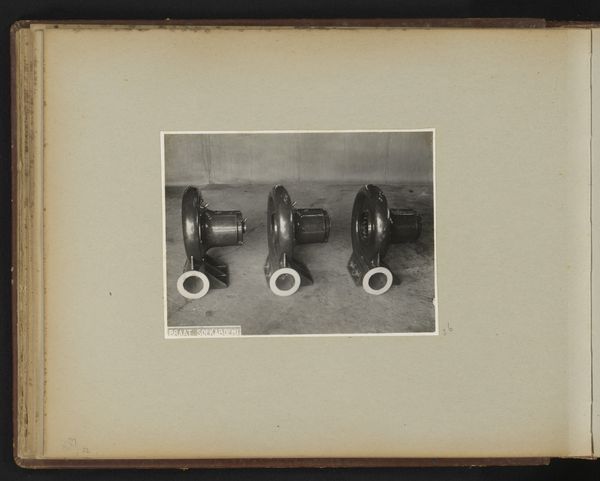
photography
#
photography
#
geometric
#
realism
Dimensions: height 163 mm, width 224 mm, height 250 mm, width 320 mm
Copyright: Rijks Museum: Open Domain
Curator: This intriguing photograph, simply titled "Machine," dates from 1931 to 1937 and comes to us from an anonymous photographer. Editor: The first thing that strikes me is its almost reverential depiction of technology, something so...functional elevated to an almost iconic status through careful framing and light. There’s a definite aura. Curator: I agree. It's interesting to consider this photograph within the context of the interwar period. This was a time when industry was booming, and technological advancements were rapidly changing society, as can be inferred from the caption in the lower-left "Machine Fabr. Braat, Sorabaja" a possible machine manufacturer. How do you feel that might play into its iconography? Editor: Well, machines in that era symbolized progress, power, and even liberation from manual labor. This image, with its sharp lines and careful composition, turns what could be cold machinery into an object that invites analysis. The wheel motif could represent ceaseless power and repetition. This symbol permeates culture representing continuity and cyclicality. Curator: Absolutely. And given that it was produced in Surabaya, now Indonesia, we need to be very aware of the colonial politics in which industry and production were caught at the time, especially for those nations which would not control that industrial power in coming decades. Editor: That colonial lens brings even more layers of complexity to the symbol. If it represents Western industrial advancement, does it signify progress or exploitation for the colony's workers and raw materials? It creates tension in the photograph's message. Curator: Precisely, which is what makes it such a compelling piece of visual and social history, a key artifact of the power dynamic of that era. The photographer could have an idea in mind, of course, but photography is never neutral; instead, it's molded and presented for us. Editor: Examining "Machine" has really illustrated how symbols can simultaneously reflect progress and oppression, all within the space of a black-and-white image. Curator: Indeed. It's a great reminder of the layers of context at play within an object presented in a modern context.
Comments
No comments
Be the first to comment and join the conversation on the ultimate creative platform.
